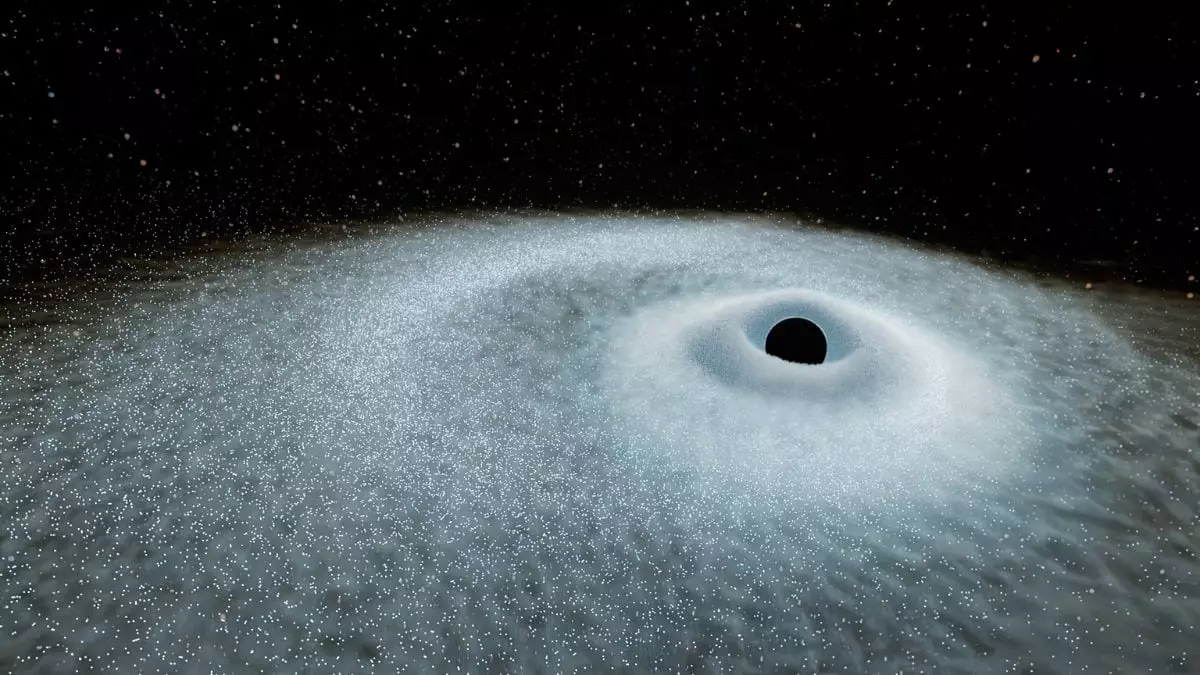In a groundbreaking revelation, astronomers have unveiled an exhilarating phenomenon: extreme nuclear transients (ENTs). These celestial explosions redefine our understanding of cosmic violence, occurring when stars, at least three times the mass of our Sun, are utterly consumed by supermassive black holes. While we’ve long been aware of tidal disruption events (TDEs) where stars meet their demise, the discovery of ENTs represents a seismic shift in our exploration of the universe’s most violent arenas. Recent observations have shown that these cosmic outbursts can shine ten times brighter than the standard TDEs, positioning them as crucial events in the cosmic narrative.
The Shocking Unveiling of ENTs
The catalyst for this revelation came from a meticulous study led by Jason Hinkle at the University of Hawaii’s Institute for Astronomy. Using data collected from the European Space Agency’s Gaia spacecraft, Hinkle identified two unprecedented flares in 2016 and 2018 that pointed to the existence of ENTs. These luminous outbursts were further corroborated by a similar observation in 2020 from the Zwicky Transient Facility, which formed a cohesive link among these extraordinary phenomena. Unlike conventional supernovae, these flares exhibit a longevity and intensity indicative of deep-seated, violent interactions between stars and black holes.
What makes these ENTs particularly captivating is their energy output; they are over 100 times as intense as supernovae and could potentially last eons longer. This suggests that the universe is not only more violent than we previously believed, but that the cycle of star death and black hole swallowing may play a pivotal role in the fabric of cosmic evolution. The expanding data set on ENTs lays the groundwork for new models aimed at deciphering the intricate dynamics between black holes and stellar remnants.
A Glimpse into the Cosmic Past
The implications of understanding ENTs are profound. These cataclysmic events serve as beacons, illuminating the growth patterns of supermassive black holes from the universe’s nascent stages. As noted by co-author Benjamin Shappee, this extraordinary visibility allows astronomers to gaze back into the depths of time, providing unprecedented insights into the ancient cosmic dynamics that forged the universe. As we seek answers about the feeding habits of black holes, ENTs could become invaluable tools in cosmological research.
However, while our knowledge has broadened, this discovery also highlights a humbling truth: the cosmos is continually evolving and hiding its secrets in plain sight. Researchers caution that the understanding of ENTs remains in its infancy, with many enigmas still to unravel. Upcoming missions with advanced instrumentation promise to unveil even more about these spectacular cosmic events, prompting a new era in astrophysical exploration.
The Need for Continued Exploration
Ultimately, the discovery of extreme nuclear transients challenges the complacency often found in the field of astrophysics. It poses critical questions about the life cycles of stars and the power dynamics of black holes. The sheer energy and rarity of ENTs force us to reconsider what we know and to remain relentless in our quest for understanding the universe. The importance of sustained research efforts cannot be overstated, as the promise of new discoveries lies ahead, waiting to reshape the way we view our cosmos. The time has come for astronomers to embrace the enigma of extreme nuclear transients, as they are poised to reveal profound truths about the symbiotic relationship between stars and black holes in the vast and mysterious expanse of space.

Leave a Reply